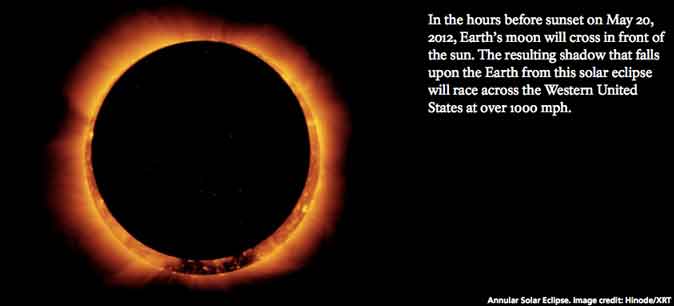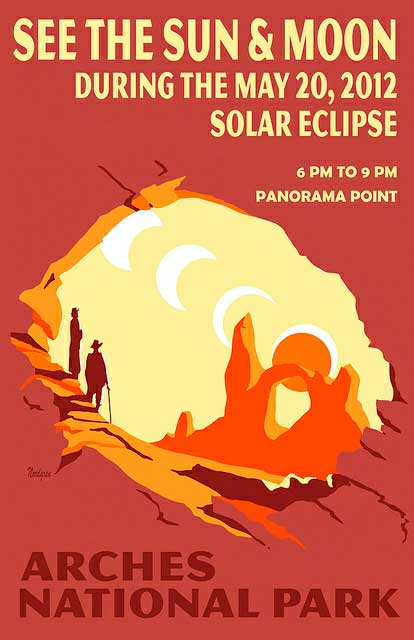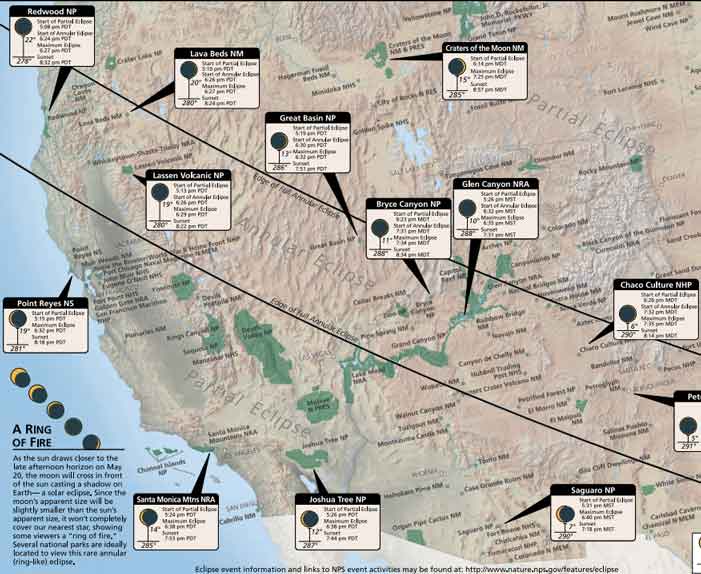There will be a stunning partial solar eclipse on Sunday, May 20th. The moon will begin shrouding the sun at 5:27 p.m. (PST) and will cover 83 percent of the sun’s surface at 6:40 p.m. The eclipse will take place while the sun is sinking toward the horizon, out over the ocean. It’ll be easy to see, if skies are clear.
Do not — repeat, do not — look at the eclipse with your naked eye or with materials that don’t protect your vision from UV and infrared radiation. You risk permanent and serious damage to your vision if you don’t use the proper safety equipment to view a solar eclipse, and the damage can occur within seconds.
via Gary Robbins
The solar spectacle is first seen in eastern Asia at dawn Monday, local time. Weather permitting, millions of early risers in southern China, northern Taiwan and southeast Japan will be able to catch the ring eclipse. Then it creeps across the Pacific with the western U.S. viewing the tail end.
The late day (Sunday) sun will transform the sun on the West coast into a glowing ring (see map below for states with full view and partial views).
Viewing, from beginning to end, lasts about two hours. The ring phenomenon lasts as long as 5 minutes depending on location.
The Eastern Seaboard will be shut out, but people can log online to sites such as the Slooh Space Camera, which plans to broadcast the event live.
***
A ring eclipse is technically called an annular solar eclipse.
Asia is abuzz over the event. In Japan, cable cars will run early to give tourists an unobstructed view from the mountains. Ferries will make special trips so that others can enjoy the scene offshore. The Taipei Astronomical Museum will open its doors at dawn while Hong Kong’s Space Museum will set up solar-filtered telescopes outside its building on the Kowloon waterfront.
The last time this type of eclipse was seen in the U.S. was in 1994. This year’s solar show offers ringside seats at 154 national parks along the eclipse path including the Grand Canyon and Bryce Canyon. A partial eclipse can be viewed from another 125 national parks.
via Alicia Chang
// All photos from the National Parks – Arches, Ring of Fire/Map (pdf)


